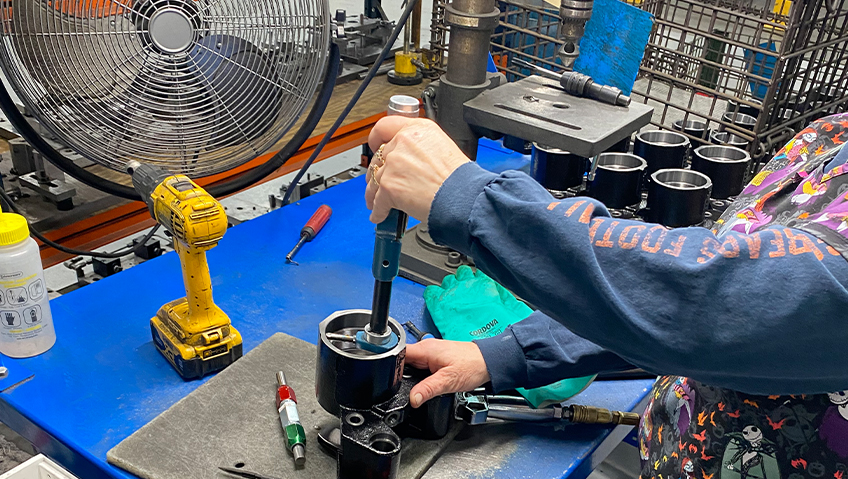Learning to make apricot jam from my grandfather one blazing African summer, I recall being surprised by what appeared to be asbestos hands. While carefully filling each jar with molten delight, he held the boiling jars of jam bare-handed, like popsicles. Once every jar was full and covered, washed and lined up, shining like precious amber gems, it occurred to me that he had, ultimately, just taught me to preserve sunshine to light up the gloom of winter months.
While we are unlikely to find a way of running electricity grids on jars of apricot jam, the basic principle persists. Long winters need sunshine with which to light them up. But how do we do that more efficiently?
In a global first, one scientist is now making it possible to store solar energy for at least half a year and longer. As a result, countries with extreme winter climates may soon add another winter staple to their proverbial pantry shelves—electricity. While this may sound too good to be true, extending the shelf life of freshly harvested sunshine holds significant promise—especially for the manufacturing industry, making this and similar technologies worth exploring.
There have been many attempts over millennia to convert sunlight to power for lighting up our lives. From fringe theories holding the ancient Egyptian Dendera Light in the tomb of Hathor circa 2500 BCE as an early example of advanced electric technology to solar cookers, the discoveries of the 1800s, and Sharp bringing the world’s first solar panel made of silicone to market in the 1960s, human minds have been at work solving the riddle of using and storing solar energy for a very long time.
At present, sunshine-harvested energy remains mainly a product of solar panels. While this is just one way of collecting it, investing in these panels is the most common commercially available method. Currently, the power collected still needs storing for later use, which chiefly relies on using batteries.
Storing solar power in different types of batteries (the hottest now is sodium ion-based and maintains its charge for several days) remains the commercial go-to solution for the time being. The main challenge with even the most advanced batteries is that storage windows are finite and the time span is relatively limited before batteries run down. Therefore, surviving winter in extreme climates still needs precision planning despite technological advances.
Lucky for us, bright minds around the world are working hard to come up with solutions to store solar energy for longer and in ways that are also Earth-friendly. One such revolutionary new solution, and perhaps the most exciting of all, is the work of Dr. Vladan Petrović, originally from Serbia. Introducing a potentially disruptive technology in 2021, Petrović has found a way of storing industrial volumes of converted sunlight for up to half a year and longer—a potential boon for regions known for heavy winters and places lacking infrastructure. It is especially promising for places in far-flung regions across Canada and elsewhere in North America, Europe, and even areas in South America, Africa, and beyond.
So far, news reports indicate that the first of Petrović’s European-based structures are planned to be erected in Lisbon, Portugal, whence the scientist hopes to heat and provide electricity to the entire European Union. These reports also indicate that Petrović will be working in collaboration with a project partner and with the support of the German government. For now, Paulo Mirpuri, philanthropist, founder and CEO of the Mirpuri Foundation, and businessman from Portugal, has made his support of Petrović’s work heard in no uncertain terms.
In 2022, Petrović was honoured with the Mirpuri Foundation’s Innovation Award at a prestigious gala ceremony for his sterling contribution during his career and retirement to solve the world’s energy crisis through alternative power innovations. To this end, he was also honoured for employing nuclear process heat for coal gasification. While the latter may not be directly related to solar energy and its implementation, the process supports power generation in a big way. The process of coal gasification delivers syngas. Used to generate power in recent times, syngas was historically known as town gas when its purpose was mainly domestic and was, therefore, piped across urban areas.
“I saw in solar energy, particularly, the possibility of solving energy in the whole world. [In Serbia] we have, I say, 2000 hours of sunshine a year… How can we efficiently accumulate that energy?” he posits in a video by the Mirpuri Foundation. “When a person dives into the issue [of solar energy accumulation] it is simply amazing what the possibilities are,” he continues.
A native of the area, Petrović erected the prototype of what is commonly referred to in research literature as the Prof. Petrović Collector at his home in Badnjevac, Serbia. Like an enormous sunflower, the large metal construction rotates with the sun, employing an aluminum mirror to harvest solar energy in the form of heat run via an absorber into a sophisticated accumulator capable of achieving tremendous temperatures, potentially exceeding 5,000 degrees Fahrenheit. The energy is then preserved thermally at over 1,400 degrees Fahrenheit in a heat-holding medium such as water, for instance, making the energy available for instant extraction, year-round, independent of weather conditions—effectively removing the issue of intermittency from the renewable energy equation.
Once captured, Petrović’s estimations indicate an energy service potential of well over 1000 apartments for a collector of the original’s size. “With our system of 550kw/hour per cubic meter of energy, we can accumulate 1000 degrees of temperature. No other system can do that today. [And it is] both a cheap and an efficient solution,” he says, further pointing out that every country can calculate its harvest potential per square meter based on the annual duration of sunshine. “So, we now have one solution, which I think satisfies all the required conditions, and we can say that we have a system that can solve the energy system, allowing for both thermal energy and electricity for all mankind,” he continues.
While there are scores of other possibilities being researched, for existing methods like lithium-ion batteries—some of which self-discharge over a period as long as six months—usage means regular charging. There are also iron-air batteries that harness the electrochemical mechanism of rust to store and release energy captured from the sun. With charge storage times ranging around 100 hours, these batteries are cost-effective and more easily obtainable from companies like Form Energy than Petrović’s solution, which is yet to be commercialized.
Finally, and every bit as promising, is a Swedish invention introduced in 2017 by scientists from Chalmers University of Technology. The Molecular Solar Thermal Energy Storage System (MOST) is a phenomenal technology that allows energy to be saved for nearly two decades in impressively sleek chips. The mechanism making this possible relies on a custom-developed molecule of carbon, hydrogen, and nitrogen transforming in the presence of sunshine into a high-energy isomer capable of being saved in liquid form, returning to its original consumable shape when retrieved from the chip with the use of a catalyst. At present, the vision is to run devices from these gossamer insertions.
While the world waits with bated breath to see what happens next, ablaze with potentially viable research, Dr. Vladan Petrović’s message to world leaders rings loud and clear. Politicians would do well to pay more attention to science. Whether we agree with his statement or not, one thing is undeniable. Quality education in science, technology, engineering, and math remains the precursor holding the key to getting Planet Earth out of our pending energy jam—with or without sunshine.






